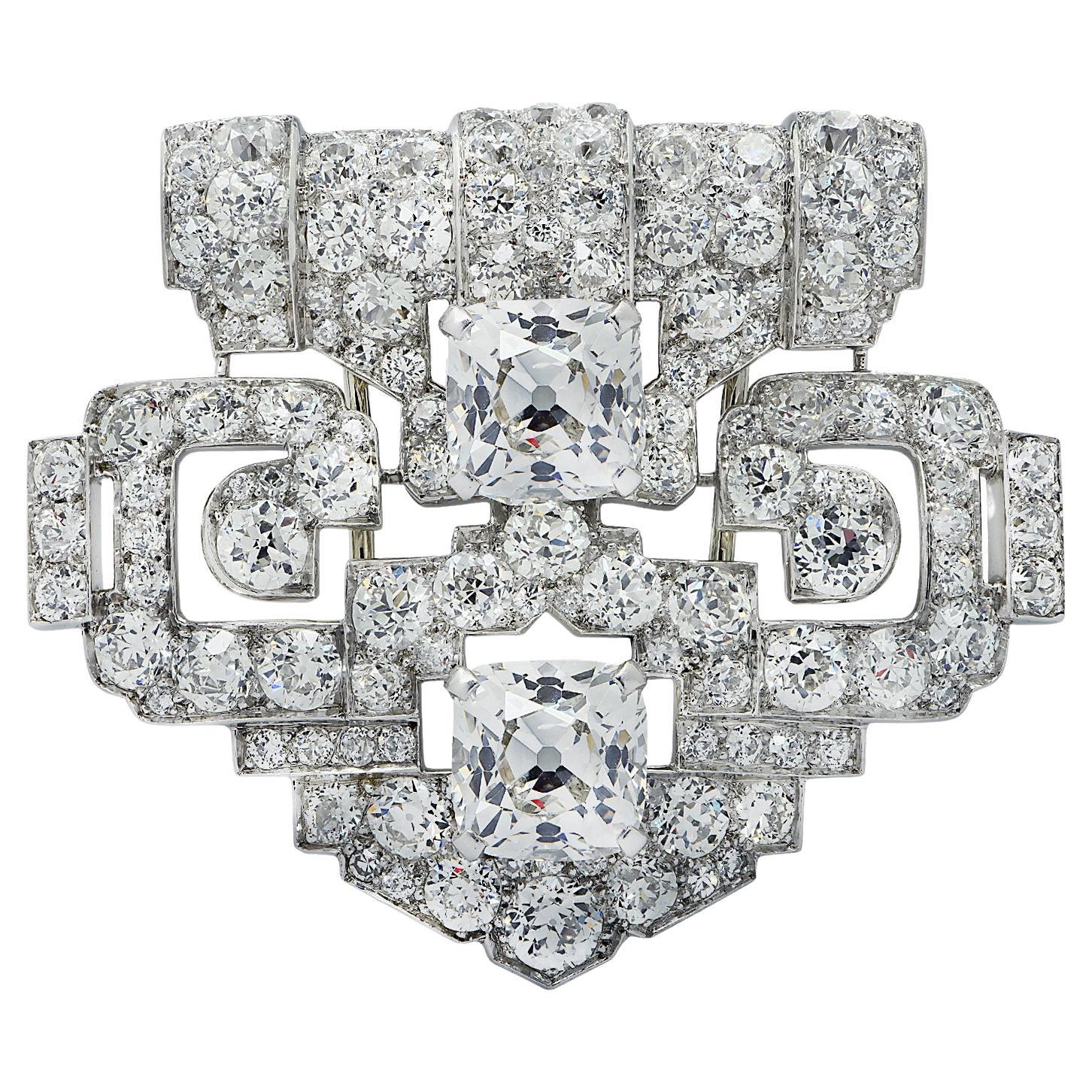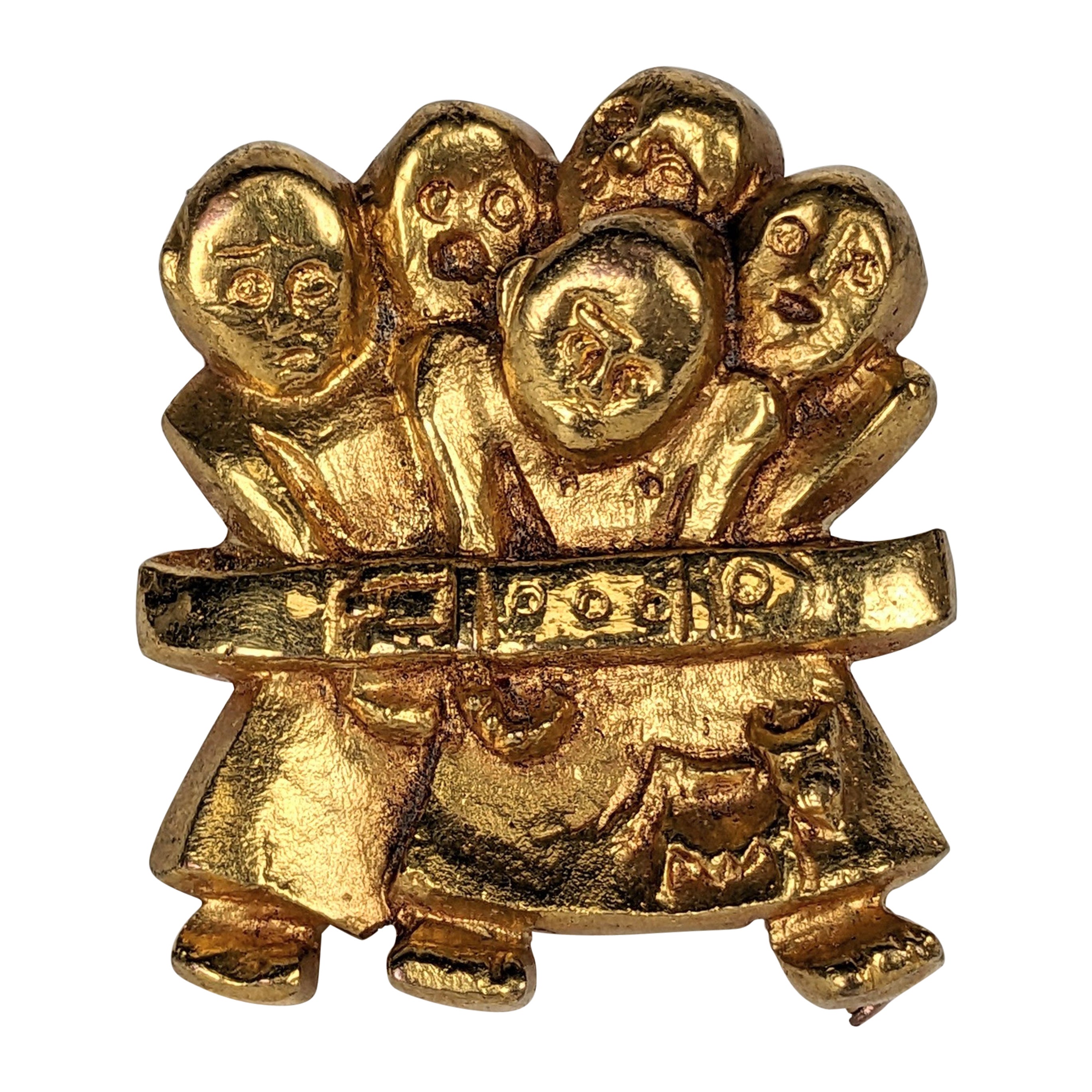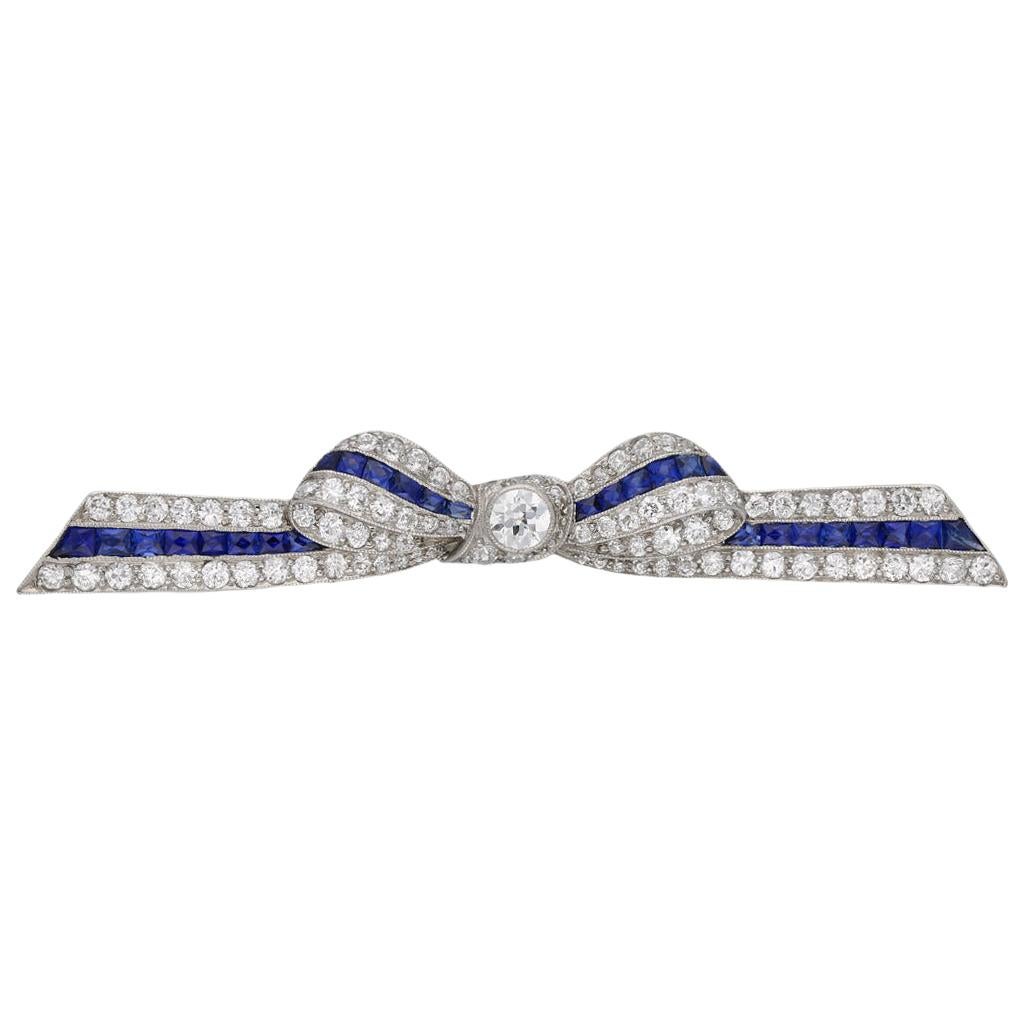Items Similar to Kalinger Pin Brooch Gilt Resin Horn of Plenty with Blue Jeweled Charms
Want more images or videos?
Request additional images or videos from the seller
1 of 9
Kalinger Pin Brooch Gilt Resin Horn of Plenty with Blue Jeweled Charms
About the Item
This gorgeous Kalinger Paris romantic pin brooch features a dimensional oversized nautical horn of plenty, made of gold-plated coated resin, all carved like a fishtail and body and ornate with extra-long dangling charms. The charms are made of cobalt blue textured resin faux coral elements complimented with baby blue glass beads and lavender blue crystal rhinestone spacers. This piece is typical of this French designer's 1980s style. The pin is signed at the back with the "Kalinger" logo under the security closing clasp.
Measurements: 1.38 in wide (3.5 cm) x 6.69 in high (17 cm).
- Creator:
- Dimensions:Width: 1.38 in (35.06 mm)Length: 6.69 in (169.93 mm)
- Style:Modernist
- Place of Origin:France
- Period:1980-1989
- Date of Manufacture:circa 1980
- Condition:
- Seller Location:Atlanta, GA
- Reference Number:
About the Seller
4.9
Vetted Seller
These experienced sellers undergo a comprehensive evaluation by our team of in-house experts.
Established in 1995
1stDibs seller since 2015
607 sales on 1stDibs
Typical response time: <1 hour
- ShippingRetrieving quote...Ships From: Atlanta, GA
- Return PolicyThis item cannot be returned.
More From This SellerView All
- Henry Perichon Gilt Bronze Medieval Pin Brooch with Blue and Green CabochonsBy Henry PerichonLocated in Atlanta, GAFrench jewelry designer Henry Perichon (also known as Henry) created this stunning gilt bronze pin brooch. The Medieval-inspired design is ornate with ovoid poured glass cabochons an...Category
Vintage 1950s French Medieval Brooches
MaterialsBronze
- Miu Miu Giant Orange Leather and Studs Flower Pin BroochBy Miu MiuLocated in Atlanta, GAThis adorable Miu Miu naturalist leather pin brooch features a giant stitched tangerine orange leather stylized flower shape ornate with stainless steel studs and eyelets. The piece ...Category
Early 2000s Italian Modern Brooches
MaterialsStainless Steel
- Line Vautrin Talosel Pink Mirror Checkerboard Brooch PinBy Line VautrinLocated in Atlanta, GAThis stunning Line Vautrin geometric Talosel brooch pin features an encrusted rectangular shape with pink-colored mirrored glass in a checkerboard pattern. The glass associated with ...Category
Vintage 1960s French Modernist Brooches
- Lanvin Paris Pin Brooch Gilt Metal and Geometric Gray EnamelBy Lanvin ParisLocated in Atlanta, GAThis stunning Lanvin Paris modernist pin brooch is a statement piece from the early 1970s featuring a massive gilded metal carved design in futuristic geometric and dimensional shape...Category
Vintage 1970s French Modernist Brooches
MaterialsEnamel, Gilt Metal
- Missoni Italy 1991 Black Resin and Metal Tribal Mask Pin BroochBy MissoniLocated in Atlanta, GAThis is a rare iconic Missoni Italy brooch designed for their 1991 jewelry collection. The pin features a dimensional oversized carved tribal mask in blac...Category
1990s Italian Modern Brooches
MaterialsSilver Plate, Copper, Gilt Metal
- Christian Lacroix Brutalist Silvered Metal Pin Brooch with Colorful EnamelBy Christian LacroixLocated in Atlanta, GAThis striking Christian Lacroix Paris signed pin brooch features a brutalist modernist triangle shape in silvered metal, all carved and textured, topped with cross, heart, stick, and...Category
Early 2000s French Modern Brooches
MaterialsEnamel
You May Also Like
- Cartier New York GIA Certified 11.24 Carat Old Mine Cushion Diamond BroochBy CartierLocated in Miami, FLMagnificent Cartier Art Deco Platinum and Diamond Brooch featuring a matching pair of important Old Mine Cut Diamonds weighing 5.60 carats and 5.64 carats. Both accompanied by a GIA report stating that they are H color VS1 and H color VS2 clarity. This brooch comes with an Expertise letter from IAJA (international Antique Jewelers...Category
Vintage 1930s American Art Deco Brooches
MaterialsDiamond, Platinum
- Carved Coral Buddha Pendant in 18k Gold Set with Diamonds, Emeralds and RubiesLocated in Honolulu, HIMAGNIFICENT large vintage Buddha pendant brooch in 18K yellow gold. This gorgeous pendant features a stunning Buddha carved in natural coral set...Category
Late 20th Century Unknown Pendant Necklaces
MaterialsCoral, Diamond, Emerald, Ruby, 18k Gold
- Line Vautrin "La Manif" Gilt Bronze BroochBy Line VautrinLocated in New York, NYGilt brooch by Line Vautrin (1913-1997), circa 1945-46. The design is known as ...Category
Vintage 1950s French Artisan Brooches
MaterialsBronze, Gilt Metal, Gold Plate, Brass
- Vintage Ruby Onyx and Diamond Classic Car BroochLocated in London, GBHere we have a superb vintage brooch. The piece has been crafted from 18ct yellow gold into the shape of a classic car from the 1930s. Automobiles of the 1930s exhibited many notable...Category
Vintage 1930s Brooches
MaterialsDiamond, Onyx, Ruby, Gold, Yellow Gold, Enamel
- Marcus & Co. Sapphire and Diamond Bow Brooch, American, circa 1935Located in London, GBSapphire and diamond bow brooch by Marcus & Co, American, circa 1935. A yellow gold and platinum bow form brooch set with one central row of twenty eig...Category
Vintage 1930s American Art Deco Brooches
MaterialsDiamond, Sapphire, Platinum
- John Brogden Shell Cameo Brooch and Earrings, English, circa 1870By John BrogdenLocated in London, GBAntique shell cameo brooch and earrings by John Brogden, English, circa 1870. A yellow gold suite of jewellery, the brooch composed of a horizontally situated oval Bull’s Mouth shell cameo of the Greek goddess Selene riding a serpentine dragon in a rubover collet setting, encircled by a conforming frame of gold beading and twisted gold wire punctuated with four gold palmette form plaques engraved and decorated with dark blue enamel and placed at the cardinal points, the reverse mounted with a hinged pin and scroll clasp, the earrings each composed of a vertical oval Bull’s Mouth shell cameo engraved with a bust length portrait of Selene with crescent-set headdress, encircled by a conforming frame matching that of the brooch with the addition of a pendant decoration composed of a horizontal bar of gold beading and twisted gold wires suspending gold link chains graduated from centre and ending in conical gold elements, the reverses mounted with French wire fittings, all in a fitted red leather case, the interior marked ‘FIRST CLASS PARIS MEDAL/ 1855.1867.1851/ PARIS FIRST CLASS & LONDON PRIZE MEDALS/ JOHN BROGDON/ Goldsmith/ MANUFACTORY/ 16, Henrietta St. Covent Garden/ London’. The cameo—defined as a gem, usually either a mineral or a shell, upon which a design has been carved in relief—is believed to have originated in Hellenistic Greece, during the third century BC. These miniature sculptures, at that time confined to the medium of hardstone, are thought to have been made with the primary purpose of personal adornment. The same practice of mounting cameos in jewellery was then continued by the Ancient Romans, and they are known to have been worn by many a Roman emperor. After the fall of Rome the fashion for cameos went into a decline, until it was again revived during the Renaissance period, brought about by a keen interest in the ancient world. At this time both antique and contemporary cameos were mounted in jewellery, as well as collected as objet d’art. The art of cameo cutting was revived in Italy, where it would remain a centre for the coming centuries. Again there was a lull in interest in carved gemstones, until the Neoclassical revival of the eighteenth century, largely stimulated by the discoveries of the ancient Roman cities of Pompeii and Herculaneum. As with the Renaissance, antique specimens were generally prized over modern cameos, and the worldliest men in Europe held them among their collections of art and antiques. That said, carving centres in Rome and Torre del Greco (near Naples) in Italy were established in response to the demand of the Grand Tourists, who travelled to Italy and Greece to become educated in the wonders of the ancient world. It was at this time that shell cameos, mostly made in Torre del Greco due to its proximity to the sea, became more popular, owing to the relative ease in carving shell over hardstone. In addition to Rome, hardstone cameos also became a specialty of Idar Oberstein, Germany, which had a long history with both the gem mining and cutting trade. In a shift away from the collector’s cases of the previous century, the nineteenth century saw a strengthening in the fashion for wearable cameos. After the Empress Josephine donned a cameo-set suite of jewellery at the coronation of Napoleon in 1804, cameo jewellery became all the rage. Napoleon played a further hand in promoting the art by establishing a gemstone carving school in Paris, inspired by his appreciation for the arts of the ancient world. By the mid-nineteenth century shell cameos, in part due to their lightness compared with hardstone cameos, were the height of fashion. Large shell cameos as well as hardstone cameos were set into contemporary mounts, often as suites of jewellery. Some of the best cameos of the nineteenth century—carved by a select group of recognized carvers—were set into revivalist mounts, corresponding to the subject matter. In Victorian England cameo jewellery was particularly prized, due in part to the fact that the Queen owned and wore a number of cameo jewels. One example which can often be seen in official portraits is the Badge of the Order of Victoria and Albert, carved by Tommaso Saulini of Rome, who also produced cameos for the maker of the present suite, John Brogden. To meet demand some carvers set themselves up in London, including William Schmidt, a German carver from Idar Oberstein, who produced cameos for top London jewellers, including Brogden, Carlo Giuliano and Child & Child. In fact, Schmidt purports to have been the first to carve cameos out of opal, which Brogden reportedly displayed in the Paris Exhibition of 1878. An extant example, now in the collection of the British Museum, was set by the Giuliano firm. Regarding subject matter, cameos throughout time have been largely figural, from bust length profile portraits to scenes with multiple full-length figures, and sometimes animals. Ancient Greek and Roman cameos often depicted mythological scenes as well as contemporary figures. During the Renaissance, mythological scenes were popular, often taken directly from ancient sculpture, as well as portraits of notable contemporary figures. During the eighteenth and nineteenth centuries, due to the revivalist styles, both Renaissance and Classical subjects were copied and set into matching (and sometimes unmatching) revivalist mounts. From the Renaissance through the Victorian era, being able to recognize the source of the carving in a cameo was a mark of erudition, revealing in the wearer knowledge of Classical art. As mentioned, the present cameo parure...Category
Antique 1870s English Victorian Brooches
MaterialsYellow Gold
Recently Viewed
View AllMore Ways To Browse
Horn Jewellery
Cobalt Jewelry
Cobalt Blue Jewellery
Cobalt Blue Jewelry
Gold Horn Jewelry
Vintage Rhinestone Clasps
Baby Blue Jewelry
Horn Charm
Vintage Blue Glass Beads
Modernist Gold Pin
Vintage Beaded Pins
Vintage Dangle Brooch
Blue Glass Brooch
Vintage Rhinestone Pins
Brooches Pins Rhinestone
Vintage Coral Charms
Jeweled Brooch
Cobalt Blue Gold Plated





